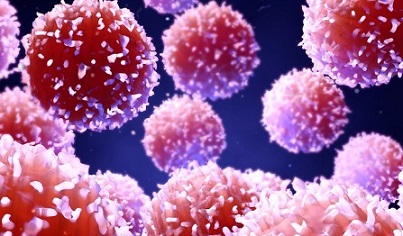Mild COVID-19 Elicits a Concerted nAb Response Shaped by T-REG Cells and CXCR3+ Circulating T-FH Cells
Nikhil Prasad Fact checked by:Thailand Medical News Team Feb 11, 2024 1 year, 10 months, 2 weeks, 5 days, 25 minutes ago
COVID-19 News: The global impact of the COVID-19 pandemic has prompted intense research to understand the intricacies of the immune response against SARS-CoV-2. In this pursuit, the role of Regulatory T (TREG) cells has gained significant attention, particularly in patients recovering from mild COVID-19. This
COVID-19 News report explores the findings from a study conducted by the University of South China, Hengyang, China, shedding light on the complex interactions between TREG cells, CXCR3+ circulating T-Follicular Helper (cTFH) cells, and neutralizing antibodies (nAbs) in individuals recovering from mild and severe COVID-19.
 Mild COVID-19 Elicits a Concerted nAb Response Shaped by T-REG
Mild COVID-19 Elicits a Concerted nAb Response Shaped by T-REG
Cells and CXCR3+ Circulating T-FH Cells
Regulatory T Cells and COVID-19 Severity
Regulatory T (TREG) cells play a pivotal role in maintaining immunological self-tolerance and mitigating excessive immune responses, especially during viral infections. The severity of COVID-19 has been associated with T-cell dysfunction, including that of TREG cells, particularly in the acute infection phase. Studies have consistently shown reduced frequencies of TREG cells and their dysfunction in severe COVID-19 cases, emphasizing their crucial role in modulating immune responses. Notably, the intricate relationship between TREG cells and the neutralizing antibody (nAb) response has become a subject of investigation.
Neutralizing Antibodies and T Follicular Helper Cells
Neutralizing antibodies (nAbs) are crucial components of the immune defense against viral infections, contributing to virus clearance. The production of high-affinity nAbs is tightly regulated by T follicular helper (TFH) cells within the germinal centers of lymphoid organs. Delayed nAb production has been correlated with fatal COVID-19 infections, underscoring the importance of understanding the dynamics of TFH cell responses. In individuals recovering from COVID-19, robust elicitation of nAbs and spike protein-specific cTFH cells has been observed, with higher nAb levels in severe cases compared to mild cases. However, the intricate interplay between TREG cells and the nAb response in COVID-19 patients remains unclear.
Study Objectives and Methodology
The study conducted by the University of South China aimed to elucidate the relationships among TREG cells, cTFH cells, and nAbs in individuals recovering from mild or severe COVID-19. The study involved analyzing the frequencies of TREG cells, cTFH cells, and their subsets in the peripheral blood mononuclear cells (PBMCs) of recovered individuals and healthy controls. Flow cytometry was employed to assess these cellular responses, while in vitro coculture experiments were conducted to explore the potential regulatory effects of TREG cells on cTFH cells and antibody responses.
Results and Key Findings
The results revealed that individuals who had recovered from mild COVID-19 exhibited significantly higher frequencies of TREG cells compared to those who recovered from severe cases an
d healthy controls. Intriguingly, the frequency of TREG cells in mild cases was negatively correlated with nAb titers. Conversely, individuals recovering from severe disease showed higher nAb titers but no significant difference in TREG cell frequencies. This discrepancy suggested a potential regulatory role of TREG cells in shaping the nAb response, particularly in mild cases.
Furthermore, the study investigated the frequencies of circulating TFH cells, with a focus on CXCR3+ cTFH cells, known to be positively correlated with nAb responses. Individuals recovering from mild disease exhibited lower frequencies of CXCR3+ cTFH cells compared to severe cases, and these frequencies were inversely correlated with TREG cell frequencies. The study indicated a concerted effort of TREG cells and CXCR3+ cTFH cells in shaping the nAb response in mild COVID-19 cases.
In vitro coculture experiments provided insights into the mechanisms underlying TREG cell regulation of the antibody response. TREG cells were found to inhibit the differentiation of memory B cells into antibody-secreting cells (ASCs) and impair antibody production. This inhibitory effect was attributed to the downregulation of TFH cell proliferation, activation, and functional molecule expression by TREG cells. Notably, TREG cells were more effective in inhibiting CXCR3+ cTFH cells, emphasizing their role in modulating specific subsets of cTFH cells.
Discussion
The findings from this study contribute significantly to our understanding of the immune response dynamics in COVID-19, particularly in mild cases. Elevated TREG cell frequencies in individuals recovering from mild COVID-19 were associated with a negative regulation of the nAb response. This negative correlation was further linked to the inhibition of CXCR3+ cTFH cells, which are crucial for supporting the spike protein-specific antibody response.
The study underscores the dual role of TREG cells in COVID-19, where they play a critical role in decreasing antiviral immune responses during the early stages and contribute to reducing inflammation-induced organ damage during the late stages of the disease. Additionally, the observed regulatory effects of TREG cells on CXCR3+ cTFH cells provide a novel insight into the coordinated immune response against SARS-CoV-2.
Conclusion
In conclusion, the study conducted by the University of South China reveals the intricate interplay between TREG cells, CXCR3+ cTFH cells, and neutralizing antibodies in individuals recovering from mild COVID-19. Elevated TREG cell frequencies act as a negative regulator of the nAb response, with a specific focus on the inhibition of CXCR3+ cTFH cells. This study significantly advances our understanding of the immune response dynamics in mild COVID-19 cases, providing valuable insights for potential therapeutic interventions and vaccine development strategies.
The study findings were published in the peer reviewed journal: The Journal of Infectious Diseases.
https://academic.oup.com/jid/advance-article/doi/10.1093/infdis/jiae061/7603061
For the latest
COVID-19 News, keep on logging to Thailand Medical News.
